From ‘bad apples’ to broken systems: How Richmond residents rewrote the narrative on the formerly incarcerated
Tuesday, July 10, 2018Ask anyone involved with efforts to help reintegrate formerly incarcerated residents in Richmond, California, and one of the first things they'll mention is the need to change the narrative around this misunderstood population.
They're doing just that — one narrator at a time.
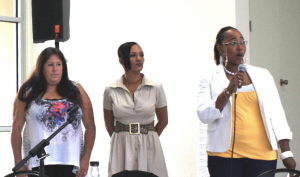
A collaboration of city residents, local and county law enforcement, elected officials, community workers, and, most importantly, formerly incarcerated residents has resulted in a nationally recognized reentry network that owes much of its success to the power of storytelling.
This approach has helped change misconceptions about the formerly incarcerated among key decision-makers in the local criminal justice system, and it has helped create a greater public understanding about the need for systemic change.
"I think the biggest misconception is that if you've been incarcerated, it means you're a bad person," said Kimberly Gamboa, who was released in 2013 after serving two years in the Contra Costa County jail.
Her story not only shares a common theme of past trauma, difficult surroundings and circumstances, it is also reminiscent of countless cases that point to systemic racial bias in our criminal justice system.
Gamboa and her sister were raised by a single mother in San Francisco's Ingleside District, a largely middle class neighborhood. She attended a Catholic high school and went to San Francisco State University. Although she "didn't grow up poor" and lived in a "nice house," Gamboa said her mother suffered from mental illness. "There was a lot of physical abuse. A lot of hitting. Screaming."
Gamboa married and had a daughter with her first husband, but they divorced after he got into trouble with the law. She raised her daughter by herself and took in her sister's daughter after her sister became addicted to drugs. Gamboa eventually remarried, and her family grew to five children. She became a preschool director and did her best to raise her family after her husband struggled to find work.
Then came a disciplinary incident with her then 11-year-old son.
"He said something disrespectful to me. I was very angry at what he said, and I spanked him on the butt with a belt," said Gamboa, who later in court-mandated therapy learned about her suppressed anger issues.
The next day, her son's teacher at school saw his welts from the spanking and reported Gamboa to Child Protective Services. Gamboa said she and her husband explained what happened to police and CPS officials and that the case was reportedly dropped.
"A year went by, and then I got a knock on the door from Richmond [police]," Gamboa said. "They were arresting me for child abuse. The [District Attorney] had picked up the case. There were no other incidents. I had never been in the system. I was never in any trouble."
A public defender represented Gamboa and suggested she take her case to trial. "The jurors were all White. My witnesses were all Black," recalled Gamboa, who is African American. "I didn't think that was fair."
They also put Gamboa's children on the witness stand. After their testimony defending their mother, Gamboa said prosecutors accused her of coercing her children. The judge handed down the maximum sentence, which included a restraining order prohibiting Gamboa from seeing her children.
Looking back, Gamboa said the most difficult part of getting caught up in the criminal justice system was its aftermath.
"When I got out [of prison], I thought I could find a job and restart my life," she said. "I had a pharmacy technician license, an eligibility worker certification, and a teaching background. Everywhere I applied I got denied."
"I made a decision to invest in personal development," Gamboa added. "I took parenting and anger management classes because my top priority was getting my kids back."
The personal development led to a new self-awareness and, eventually, an interest in social justice for others who have been in a similar situation.
"I feel like I got played [by] the system — before and after I got incarcerated," Gamboa said.
Then, Gamboa discovered the Safe Return Project, which focuses on elevating the voices of formerly incarcerated residents so they can advocate for more resources and policy issues. The project has increased understanding among decision-makers — and the public in general — of the challenges as well as successes of formerly incarcerated residents, by involving them in research, information gathering, and, most importantly, highlighting their personal journeys.
"After learning about Safe Return and the work they were doing, I was able to channel my energies toward making a difference in our community," Gamboa said.
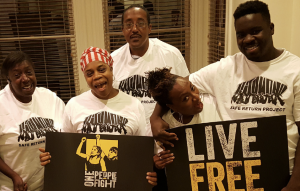
The Safe Return Project was one of several reentry organizations launched with the help of The California Endowment and the collective efforts of public and private stakeholders. With Safe Return, three supporting agencies were key to its formation: Contra Costa Interfaith Supporting Community Organization (CCISCO), the Richmond Office of Neighborhood Safety, and the Pacific Institute.
The goal of Safe Return is to conduct community-based research to help understand and support the reintegration of residents involved in the criminal justice system. To that end, a team of formerly incarcerated Richmond residents was recruited to develop research questions and a survey questionnaire.
Recognition that more information was needed came from the agencies, community groups, and other stakeholders developing a strategic plan for reentry in Contra Costa County, following a collaborative convened in 2010 by the Richmond Office of Neighborhood Safety, an effort championed by County Supervisor John Gioia. The collaborative learned that there were scant data and information on residents returning from incarceration.
"We learned that if we wanted to have a strategy, we needed to work with them. We needed to be talking with them, not at them," Gioia said.
That same year, The California Endowment launched its Building Healthy Communities initiative. The 10-year, $1 billion community initiative aims to "advance statewide policy, change the narrative, and transform 14 of California's communities most devastated by health inequities into places where all people have an opportunity to thrive." Richmond was among the 14 sites chosen to participate.
"The criminal justice system was wreaking havoc on not just individuals who had gone to jail, but on families and communities, many of them low-income communities of color," said Diane Aranda, the program manager for BHC Richmond. "The human costs were on so many levels — violence, trauma, unemployment, drug abuse. … It was clear we had to address this issue if we wanted to be engaged in building strong, healthy communities."
Richmond: Highest percentage of formerly incarcerated in Contra Costa County
Richmond, a sprawling city of more than 110,000 residents on the eastern shores of the San Francisco Bay, has a rich and tumultuous history. At the start of World War II, major shipyards were built along Richmond's waterfront, hiring thousands of workers, including many African Americans. An innovative medical system developed for shipyard workers eventually became today's Kaiser Permanente HMO.
The vibrant economy created a bustling downtown and lively social and cultural scene. But after the shipyards closed, White flight and steady economic divestment led to high unemployment, rising crime rates, and racial tensions. Today, nearly 40 percent of Richmond residents live in poverty. The city's remaining dominant industry, the Chevron Richmond Refinery, expanded considerably following the war and has since become a major site of industrial and environmental offenses.
Over the years, Richmond gained notoriety for being among California's most dangerous cities. Fueled by the "War on Drugs," the massive effort launched in the early 1980s that led to increased policing and incarceration, the rate of prison admissions grew 486 percent between 1970 and 2000 in Contra Costa County. Of the county's approximately 1 million residents, a third of those who were on probation or parole lived in Richmond.
The above figures were part of a 2011 seminal research paper compiled by Safe Return's founding group of formerly incarcerated researchers titled, "Speaking Truth on Coming Home: Research Findings and Recommendations on Reentry in Richmond." According to the study, this step up in penalties and prison sentences resulted in nearly a quarter of California's population having a criminal history. African Americans and Latinos have been disproportionately impacted. The report showed that while African Americans comprised 6 percent of the state's population, they made up nearly 30 percent of prisoners and parolees:
"As a city with majority Black and Latino residents, Richmond was affected by the drug war more than other areas. In the nation's largest cities, drug arrests for African Americans rose at three times the rate for Whites from 1990 to 2003, even though studies show drug use among different racial groups is roughly the same."
But the city and its residents persevered. Richmond has redeveloped its shipyard into a destination for locals and visitors alike, featuring a national park visitor center with exhibits that commemorate the contributions of American civilians on the World War II home front. A downtown transit center is steadily anchoring surrounding economic reinvestment. And a community with divisions both internally and with law enforcement has made tremendous strides toward stemming the tide of mass incarceration and helping formerly incarcerated residents transition to life outside.
Of the estimated 3,000 people currently on parole or probation in Contra Costa County, the majority continue to reside in Richmond or Antioch, said Gioia.
"Richmond continues to evolve as a city that is making great progress toward changing not only the way we treat this population, but also how we see them," he said.
An idea for inclusivity sparks research-based advocacy
Like many others, the late Richard Boyd got "priced out" of San Francisco and moved to Richmond in 2006.
"I didn't really do any research. I saw young Black and Brown men getting killed. I saw domestic violence and drugs all combined in one neighborhood," recalled Boyd, who passed away in January 2018.
He also saw a lack of resources and accountability: "I saw two cultures not working together: law enforcement and the community. For me, it became personal. How do I protect my family? I didn't believe in getting a gun to protect them. So I got involved with CCISCO."
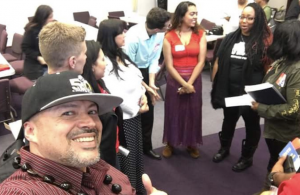
The Contra Costa Interfaith Supporting Community Organization (CCISCO) is a group that was started by faith leaders and community activists in Richmond who worked out of local churches. The organization works on a wide array of community issues.
"We didn't start with the incarcerated piece," Boyd said. Rather, CCISCO members attended a meeting of the Contra Costa County Reentry Collaborative, a multiagency collaboration created in 2009 that looked at funding objectives and priorities for moving incarcerated inmates from state facilities into local jails and probation programs.
"The room was filled with 'experts,' but there were no former prisoners there," Boyd said. "We came up with the idea of raising money to hire formerly incarcerated inmates to do our research. That was something I'm a firm believer in. At CCISCO, we did our research. For example, if we wanted to advocate for a park, we would find out what it would cost, where could the money be allotted from. Once we did our research, we'd talk to city departments. We'd have the community do the presentations."
Solid research along with the power of collaboration and having authentic voices advocating for themselves has been the trifecta of success for Richmond.
"Slogans are not solutions," said Rebecca Brown, who runs Richmond's Reentry Solutions Group, formed in 2011 to integrate the voices of the formerly incarcerated with other stakeholders for collective impact related to reentry in Contra Costa County. "We wanted to have an educated community not just based on sound bites. Two of the things we did right away were intentional networking and research. Research helped build opportunity into action."
Brown's organization holds monthly community meetings that address issues related to trauma, violence, incarceration, and reentry. They also work on advancing policy, mobilizing funding, and establishing shared measurement practices.
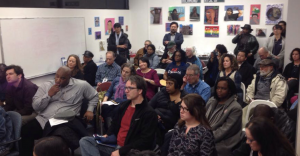
"Empowerment matters when you build skills to use that power," said Brown.
After the three agency sponsors of Safe Return developed a program, work plan, and project goals, they advertised in probation centers and other places to recruit their first cohort of community researchers. The position required that applicants be formerly incarcerated and be able to work 10-20 hours per week over a 10-month period. They would be paid $20 per hour. By the fall of 2010, three women and five men were hired.
Tamisha Walker, who is now director of Safe Return, was among the group.
"I was looking for a job when I saw a flier for work for the formerly incarcerated. At first I thought it was a joke," she said, recalling the difficult days shortly following her release from prison. "I was struggling through the motions, trying to stay sober. I couldn't get a job. Couldn't get housing. I thought, 'If you can pay me to solve my own problems, I have nothing to lose.' Once I got into the team, it was about bringing our own experiences to the table."
Walker, like others she met who had been through the prison system, had a familiar story: a former foster child with a family history of drug addiction and incarceration. She dropped out of high school her senior year when she became pregnant. She saw her brother gunned down, shot 43 times.
Organizers focused their initial efforts on team development to foster trust and collaboration among the researchers who faced unique challenges, such as trauma, family problems, and other issues they were dealing with before and after incarceration. They later received training in research and organizing skills. Within a year, they began conducting surveys for their 2011 groundbreaking report.
Their efforts, combined with those of other stakeholders, formed a momentum-gaining movement in Richmond that helped pave the way for other programs, like Richmond's Reentry Success Center.
"It takes many different actors playing their roles — playing their parts to the fullest," Aranda said. "The capacity that was built across multiple sectors was what made Richmond a leader in reentry."
A bright and airy mural-covered space located in a former jewelry store in downtown Richmond, the Reentry Success Center helps formerly incarcerated residents find jobs and housing, access health services, and get help with substance abuse and other issues, all under one roof. Gioia said formerly incarcerated individuals used their experience to tailor the center's approach, which is decidedly "un-institutional."
Inside the center, which opened in the fall of 2015, clients can use computers, enroll in educational courses, get assistance with job-training opportunities, meet with counselors, and access other types of support. In addition to funding from AB 109 (legislation created to reduce state prison populations), the center also gained support from Rubicon Programs, a local job training and counseling service that served as an organizational host for the center.
Successes and challenges
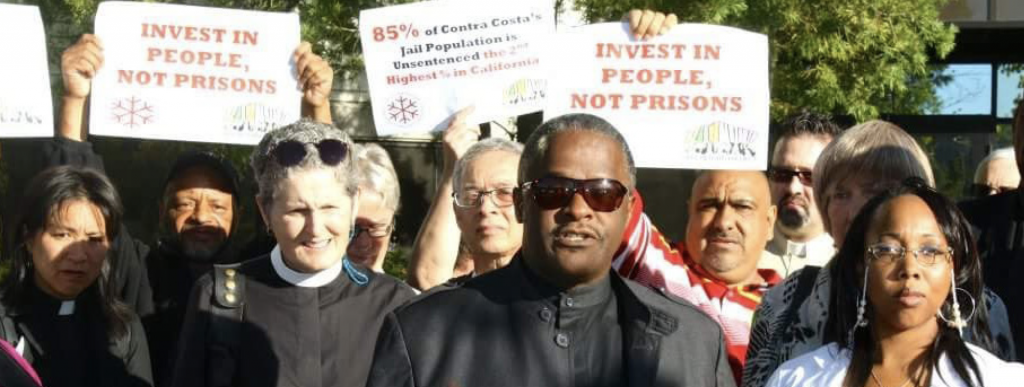
"Speaking Truth on Coming Home" more than informed local advocacy efforts — it brought legitimacy and a deeper understanding of issues so many formerly incarcerated residents faced. Among the findings:
- 78 percent of the more than 100 surveyed said they were unemployed.
- More than half had not benefited from a single training or support program while they were incarcerated.
- One in five still did not have a valid ID, which can be a violation of probation or parole and lead to reincarceration.
- 33 percent of those surveyed had a diagnosed health condition, with the top three conditions reported being asthma, bi-polar disorder, and hypertension.
- Nearly half had no health insurance.
Based on the findings of the surveys and meetings with hundreds of residents and agencies, advocates, and service providers, the team developed four recommendations for improving reintegration after incarceration in Richmond:
- Establish a supportive housing program in Richmond that provides medium-term housing and connections to services for residents recently released from incarceration.
- Remove barriers to employment for formerly incarcerated people, and improve employer practices in recruiting and hiring this community.
- Create a one-stop referral service for people coming home (which was realized with the creation of the Reentry Success Center).
- Form a regular meeting of formerly incarcerated people in Richmond for mutual support in developing and implementing a personal plan for success.
As the team members presented their findings, they discovered the power of their voices and stories to advocate on behalf of all incarcerated individuals. Aranda recalled attending the release of the report to a packed audience of more than 100 people. "It was a transformative moment," she said.
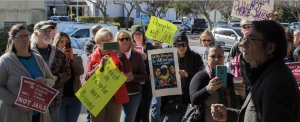
The group took advantage of the attention they and their report received and quickly moved from research to advocacy. Their first major effort focused on the city of Richmond's hiring practices. Working with a variety of partners, including community groups and city representatives, they successfully got Richmond to pass an ordinance that prohibited the city from asking job seekers about their criminal history. Within the year, the group persuaded the city to expand "ban-the-box" to all businesses that it had contracts with.
Unarguably, the biggest and most far-reaching advocacy opportunity for formerly incarcerated advocates and their growing network of supporters from government, law enforcement, and other sectors was the passage of Assembly Bill 109, otherwise known as "realignment." Signed by Governor Jerry Brown in 2011, the law aims to reduce the number of people in state prisons by giving more local control and funding for criminal justice decisions.
After attending a meeting in 2012 about realignment and learning that the county sheriff was planning to use the new funds to expand the county jail, a coalition of community groups and allies launched a campaign, "Invest in People, Not Prisons." Their goal was to defeat the jail expansion proposal and redirect the money toward services and resources for formerly incarcerated residents. Before the year's end, Contra Costa County became the first in the state to successfully block a planned jail expansion. Instead, $5.2 million of the county's AB 109 funds went to local programs and services for the formerly incarcerated.
While the wins in Richmond and Contra Costa County have been monumental, they were not without their share of challenges.
Like any nascent movement, establishing trust and relationships is a process that takes time. For formerly incarcerated residents, the process is complicated by the emotional trauma and challenges they face with housing, employment, and other issues.
Preparing for organizational transition has also been problematic. For example, at Safe Return, the departure of two of its founding sponsors left the organization with fewer resources and a greater need for fundraising to survive and thrive.
Perhaps the most persistent challenge for advocates is the same one they've had the most success with: combatting the dominant frame around the formerly incarcerated.
"I don't say give us a second chance. I say give us a first chance," Walker said. "To give someone a second chance means they had a first chance. We still need to work on demolishing this dominant narrative that we face every day. It's not about rebuilding our lives because that leads people to believe that those of us who went to prison had all the opportunities in the world, but they blew it."
Said Aranda: "It's the broader narrative change work that we need to continue to push. It's about seeing their faces and hearing their voices. These amazing leaders have the capability to change perceptions and misconceptions to be truly extraordinary change agents in their communities."
Still, Walker, Aranda, and others are quick to highlight their success in changing hearts and minds. Their legacy of collaboration is one that continues.
"We would not have survived to this point if we were not part of Building Healthy Communities," said Brown, whose Reentry Solutions Group was among the many organizations that worked strategically to stop the proposed county jail expansion in 2012.
"We have better nonprofit sector capacity than before," Brown concluded. "There's a better understanding of collective impact."
Walker agreed: "The collaboration we've seen has been a huge shift. We're not doing it perfectly, but we're doing it a lot more. That gives me a vision of a better future."
As a 20-year member of the Contra Costa County Board of Supervisors, Gioia praised the political currency gained by Richmond advocates, particularly its formerly incarcerated residents.
"This population has not been allowed to have a political voice," Gioia said. "In some communities, they may not be seen as their own best advocates. I'm proud that here in Contra Costa County, people stop and listen to their stories. They spoke up and didn't go away. Social justice is about equity and justice. It's not just a phrase. You have to have the tools and create the environment for that to happen."
Lessons learned

The community of Richmond has gained a national reputation for creating community-led advocacy that is transforming the lives of formerly incarcerated residents by pushing for broader systems change. Here are a few key lessons learned from their trials and successes:
Harness the power of storytelling.
Early on, community organizers and their supporters learned the importance of giving those most impacted by the prison system a seat at the table. Richmond owes much of its success to effective storytelling that provides much-needed social and racial context to the plight of formerly incarcerated residents. Continued efforts to reframe incarceration could benefit from an expanded list of "authentic voices" — those who provide personal testimony on the issue. Community members, professionals, educators, law enforcement personnel, family members of the formerly incarcerated, and others can support goals for reentry efforts by telling their own unique stories of how incarceration impacts their community both personally and professionally.
Build partnerships for collective impact.
A key lesson from Richmond's success around reentry is the importance of building relationships and collaboration with key community partners. While programs such as Safe Return started out with initial support from Richmond's faith community, program members quickly learned the value of reaching out to others, including unlikely allies among local law enforcement officials.
Aim for systems-level policy change.
Early on, advocates in Richmond chose to focus on broader systems change to address their individual reentry issues. From their involvement in Richmond's "ban-the-box" measure to the successful campaign against the county jail expansion, which led to more resources for reentry programs and services, local efforts have helped improve policies that impact locally incarcerated residents.
Plan for the long term.
"Communities can only take it so far. City and county systems along with the private sector play an important role so that resources are directed in appropriate and meaningful ways," said Devone Boggan, former neighborhood safety director for the city of Richmond who was among the founding leaders in Richmond who advocated for reentry support. Ensuring that funding streams continue past sequential advocacy campaigns is key to the long-term success of Richmond's continued efforts around reentry.
Vision for the future: Next steps for reentry in Richmond and Contra Costa County
For Richmond's work around reentry to continue, advocates stress the importance of increasing capacity to serve more of the community.
At Safe Return, Walker has focused much of her energy on sustaining her group's Collective Impact Leadership Institute, an annual 10-week leadership development training open to formerly incarcerated people. The next step for Safe Return's leadership is to work more on addressing family trauma associated with incarceration. How and what this looks like programmatically has yet to be determined, but she envisions more counseling and therapy services for mental health, drug addiction, and trauma-related issues.
"So many people experience so much trauma, abuse, and neglect before their incarceration," Walker said. "We need to make meaningful changes that will prevent more people from going to jail in the first place."
Similarly, Brown's vision for the future of Reentry Solutions Group is to build local capacity so that reform efforts continue following leadership or funding changes: "My biggest hope is that we are able to institutionalize these efforts to benefit others in the future."
Acknowledgments
Berkeley Media Studies Group (BMSG) would like to thank the following reviewers for their thoughtful feedback and edits: Alexandra Desautels, The California Endowment, and Diane Aranda, The California Endowment, Building Healthy Communities, Richmond. Thanks also to The California Endowment for their generous support of this project.
© 2018 Berkeley Media Studies Group, a project of the Public Health Institute, and The California Endowment.




